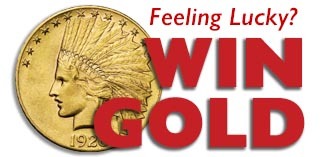Two Bits, Four Bits, Six Bits, a Dollar
Jul 19th 2023
Coinage is an integral part of a country’s culture and history, helping tell the story of the nation’s beginnings. But of course, the minting of coins cannot happen before a country is appreciably organized. That was certainly true in early America.
The first British colonists arrived on the eastern shores of the New World in the 17th century, and brought with them familiar objects, ideals and customs – including the English monetary system. As British subjects, they used the same basic units of currency: pounds, shillings and pence.
Although an ocean separated the colonists from the British monarchy, they were not yet out from under its manicured and bejeweled thumb. England you see, wanted to have its crumpets – and eat them too — maintaining control by requiring that any coinage must be shipped across the pond to pay for imported goods, but by also prohibiting the colonists from producing their own. This oversight became just one of the many stepping stones laid on the path toward the Revolutionary War.
Because of the Crown’s stinginess, colony-created paper currency and any foreign coinage to be had circulated throughout the original Thirteen Colonies. Spanish pieces would begin to fill the void; silver deposits and minting operations in areas of the New World controlled by Spain made these coins more accessible to the English settlers than their own native currency.
The eight reales, or Spanish dollar was the largest of these silver coins. Due to the scarcity of small denomination coins, to make change a Spanish dollar would sometimes be cut into eight triangular parts, with each wedge or “bit” the equivalent of one eighth of a dollar. The term “bit” was used by the English to refer to small denomination coinage, thus “two-bits” equaled a quarter dollar, “four-bits,” a half dollar; and so on. This practice also earned the coin the legendary moniker, “piece of eight” long associated with pirate’s plunder.
As most citizens of the newly-independent United States of America were familiar with units of the eight real, Thomas Jefferson thought it wise to adopt a similar monetary system based upon the big silver coin. It is believed that the U.S. dollar sign ($) was an adaption of the Herculean pillars depicted on the reverse side of the eight reales. Even after the U.S. Mint issued its own official dollar denomination, this silver-laden coin remained legal-tender in America until 1857 and circulated freely for many years beyond.
Americans were not the only ones who appreciated these Spanish silver pieces. The consistent silver content and availability of the eight reales led to its global use, becoming the first internationally recognized trade currency. Pieces of eight would later cross oceans, carried by New England clipper ships to facilitate trade with the Far East — and so trusted was this coin that many Asian merchants would refuse to accept any other form of payment. Surviving coins often bear the chop marks of those merchants from long ago — a reminder of their exotic past.
Today these big silver treasures are a favorite of collectors who appreciate history, numismatic value and silver content. As with most collectibles, there are fewer and fewer available in the marketplace as time goes on making now a great time to acquire one of these coins for yourself.


